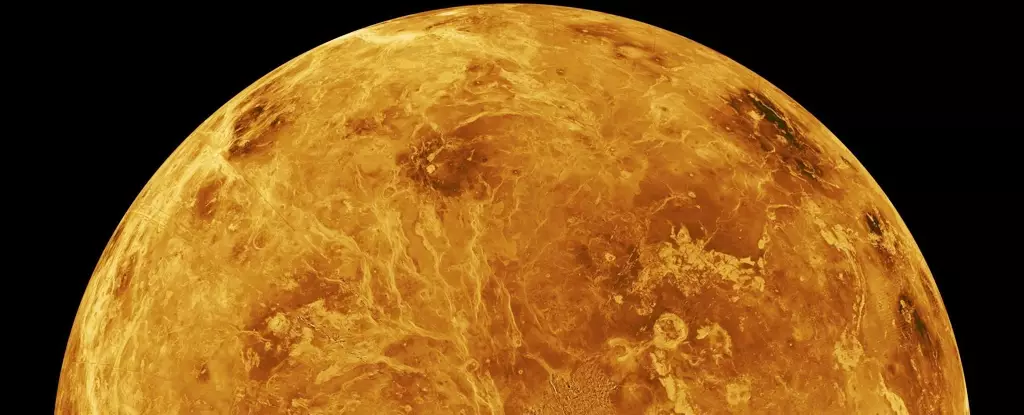In the early epochs of the Solar System, the planets were born out of chaos, with celestial bodies colliding and impacting one another in a violent ballet of rock and molten material. The formative years were marked by relentless bombardment, resulting in pocked surfaces and massive craters across many planetary bodies. While Mercury, Mars, the Moon, and even Earth have all retained evidence of this turbulent past, the surface of Venus presents a striking contradiction. Unlike its rocky counterparts, Venus appears to lack large impact basins—structures typically associated with colossal celestial collisions. This peculiarity raises profound questions about Venus’s formation and geological history.
Despite Venus’s infernal atmosphere and extreme surface conditions, scientists have found that impact craters are conspicuously prevalent, albeit smaller in size. The surprising absence of craters exceeding 300 kilometers (186 miles) in diameter signals that there may have been significant geological processes at play that have obscured the planet’s early impact history. Recent discoveries point to the presence of tessera terrain—geological features characterized by complex patterns of concentric rings—suggesting that the planet’s surface has indeed recorded monumental impacts. The Haastte-Baad Tessera, with its vast expanse of approximately 1,500 kilometers, may provide the first definitive evidence of ancient giant impacts on Venus that have long eluded researchers.
The latest analyses of the Haastte-Baad Tessera suggest that two colossal impacts likely took place within a relatively short period, approximately 3.5 billion years ago, when Venus’s interior was still largely molten beneath a fragile crust. Geologist Vicki Hansen and her team have proposed that the unique tessera formations arose from these dual impacts, which penetrated the thin outer layer and interacted with the liquefied mantle below. This dynamic process is postulated to have resulted in the uplift and subsequent crumpling of the surface, leading to the concentric ring structures that define the Haastte-Baad terrain today.
Such findings shift our understanding of what impact structures can resemble. Historically, researchers have sought large, straightforward depressions in the ground to identify craters. However, Venus’s geology indicates that the characteristics of these features can be far more complex and varied, contingent upon the nature of both the impacting bodies and the planet’s geological makeup.
Researchers have made comparisons with other celestial bodies, such as Jupiter’s moon Callisto, which boasts its own multi-ringed structure known as Valhalla. However, while the processes involved in creating such features on Callisto are relatively straightforward, Venus’s geodynamics introduce additional layers of complexity. With the surface marked by substantial molten activity, a double impact could catalyze significant geological metamorphosis, wherein magma from below surges up to create new terrain features.
In this scenario, the formation of the concentric tessera can be attributed to the interplay between the solid remnants left in the mantle after impacts and the surrounding geological features. The notion of buoyant residuum—strong yet lighter material formed during partial melting—emerges as a crucial aspect of the Venusian geological cycle. Hansen’s analysis suggests that this residuum effectively behaves like an air mattress in a lava pond, buoying the new terrain upward until solidification occurs.
Ultimately, the understanding of Haastte-Baad Tessera holds broader implications for our comprehension of planetary evolution. By recognizing that impact structures can manifest in unforeseen and varied ways, researchers can broaden the lens through which they examine other rocky bodies in the Solar System. What initially seems a simple change in perspective reveals a wealth of information about planetary history and the conditions that facilitated such changes.
With ongoing studies and evolving analyses, the mystery of Venus may begin to unveil new layers of complexity. The presence of unique geological formations suggests a more dynamic past than previously believed. The implications extend to other planetary bodies, providing a framework for understanding the evolution of rocky planets across the achingly vast expanse of the Solar System. As scientists continue to probe the depths of Venus’s past, we may be only beginning to scratch the surface of an intricate and tumultuous story written in rock and time.

